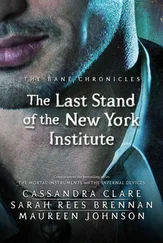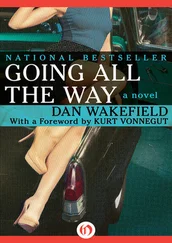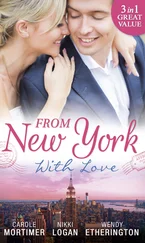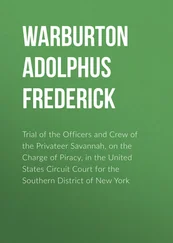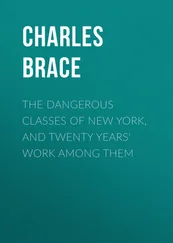Joan Didion, from Sacramento, opened the window of the bus she took from Idlewild (later Kennedy) Airport to Manhattan to get a glimpse of the skyline, but all she could see was the “wastes of Queens” and signs that said MIDTOWN TUNNEL THIS WAY. There was a sudden summer shower, which seemed exotic and remarkable to her because she was from the West, where there was no summer rain. She was a junior at Berkeley when she flew to New York that June of 1955 to be a college guest editor at Mademoiselle . She remembers it as her first trip on a plane. She recounted, in Slouching Towards Bethlehem , that the temporary terminal at Idlewild smelled of mildew, and some instinct, “programmed” by all the songs, movies, and stories she knew of New York, told her things would never be the same again.
On the train I took, after the great steak dinner in the dining car, I read until the overhead lights went out and then put down the anthology with Van Doren’s essay in it on the seat beside me. I pressed my face against the darkened window, watching the scattered lights of isolated farmhouses shining like beacons across the fields as we moved through the land I could love perhaps for the first time now that I was leaving it.
The next morning I woke to the bright winter sunlight reflecting on steel and glass skyscrapers packed in a proud, upreaching outline, the one my friend Ted was thrilled to see from the Jersey Turnpike at night, the one my future professor and mentor, C. Wright Mills, pointed at one morning when we crossed the George Washington Bridge and said with a challenge in his voice, “Take that one, boy!”
2. Lions and Cubs on Morningside Heights
When New Yorkers said “train” it meant the subway. As in Duke Ellington’s “Take the A Train,” you took the train to go downtown to Greenwich Village or uptown to Columbia, on Morningside Heights. I took the IRT line to the local stop at 116th and Broadway and got off there to go to college. Crash and toot of congested traffic, underground earthquaking rush of the subway, faces black, yellow, and swarthy, voices speaking in foreign tongues, made the place seem as alien as Rangoon, yet I felt at home, sensing it was where I should be.
Columbia bore no resemblance to the idyllic, pastoral campuses of the movies, or the ones I knew in the Midwest, where ivy-clad buildings were set on rolling hills with ancient elms, and chapel bells tolled the slow passage of time. The quad of dormitories and classroom buildings that made up Columbia College was set in the gritty heart of the city, and the catalogue boasted, “New York is our laboratory.” I loved it. What could be more removed from the rah-rah frat-house collegiate life I had fled?
Because I was a transfer student, I had to make up required courses I had missed, but my faculty advisor allowed me, as a reward, to take the elective Introduction to Poetry course of Mark Van Doren my first semester. The morning that began a new term—and for me a whole new life—I went for breakfast at the drugstore my roommates recommended on Amsterdam Avenue (the eastern boundary of the campus, opposite Broadway), squeezing into a packed counter of students crying orders to the friendly pharmacist, Mr. Zipper, who reminded me of a plump Groucho Marx. I picked out something soft and sweet called a French cruller, a doughnut fancier than any I’d dunked in Hoosierdom, and washed it down with sugar-and-cream-laden coffee, hoping to dispel the butterflies I felt before going to meet for the first time the teacher whose words drew me halfway across the country.
Van Doren had become a prototype of the American author-scholar-sage as college professor. Winner of the Pulitzer Prize for his Collected Poems in 1940, he had influenced such gifted students as John Berryman and Louis Simpson (as well as young renegade poets still to be heard from, like Allen Ginsberg and Lawrence Ferlinghetti), the critics Maxwell Geismar and Lionel Trilling, the editors Robert Giroux and Clifton Fadiman, and the novelist Herbert Gold. He appeared in Whittaker Chambers’s political autobiography, Witness , and in Thomas Merton’s spiritual autobiography, The Seven Storey Mountain . After getting an A in Van Doren’s course on Shakespeare, a football player named Jack Kerouac quit the Columbia team to spend more time studying literature. Before his retirement at the end of the decade, Van Doren would be described by Newsweek as “a living legend.”
When I saw Van Doren in class that morning for the first time, his hair was gray and I had no idea of his age (fifty-eight), which was anyway irrelevant for he didn’t seem old but ageless, like the visage of one of the presidents on Mount Rushmore. His face had that craggy granite look of being hewn or chiseled by hard-won experience and knowledge, but it wasn’t grim or set in a stare of stony, locked-away wisdom. His eyes gave off a love of his work (which included the students seated before him) and the world, and he had a playful and wry sense of humor. To Allen Tate he was “the scholarly looking poet who always looks as if … he were going to say grace, but says instead damn.”
The Noble Voice was the title Van Doren gave one of his books, and it was also an apt description of his own way of speaking—mellow, thoughtful, dignified without being formal. His voice was familiar to radio fans across the country, who heard him discuss great works of literature on “Invitation to Learning.” Van Doren retained a flat midwestern accent (he was the fourth of five sons of an Illinois country doctor) that made me feel at home. He wasn’t afraid to sound his r ’s, and he spoke at a measured, leisurely pace, letting the words come out without being clipped at the end or hurried along like the New York traffic. He anglicized foreign words when he pronounced them, speaking of Don Quixote as “Quicks-ott,” with the x sounding, rather than in the Spanish manner of “Key-ho-tay.” He said with a wry smile that if we followed that style, we would have to call the capital of France “Paree,” and he preferred plain “Paris.”
Hearing that plain midwestern accent, as well as the plain thinking behind it, bolstered my confidence, proving that people from the hinterlands could make it in East Coast literary circles. It gave me courage to speak to some of my new classmates, jostling down the steps of Hamilton Hall after a lecture.
“Hey, Van Doren’s great, huh?” I said.
One of them shrugged, and in a nasal New Yorkese said, “I dunno, he’s a little too midwestuhn.”
“Yeah, that’s it!” I blurted out.
It was not just the familiar accent that made it easier to knock at the door of Van Doren’s office and introduce myself later that semester. It was also the kindness in the older man’s eyes, in his whole demeanor.
“May I come in?”
“Please.”
Professor Van Doren greeted me as a fellow midwesterner and fellow lover of words and stories. I told him about the impact of reading his essay “Education by Books” and mentioned that a friend of mine from high school, John Sigler, had been one of his student hosts when he gave a reading at Dartmouth. Van Doren said he wished he’d known: “I would have told him you were a student of mine.”
I left his office in Hamilton Hall not only feeling welcomed and acknowledged but somehow made safe in that alien place, intimidating city and sophisticated college. I had the reassuring sense that because such a man was here, no deep-down harm could come to me, no malevolence invade the grace of his plain goodness.
A student whose poetry Van Doren had encouraged (this was four years before I met him myself) came running into the office of the Columbia English department saying, “I just saw the light!” Most of the professors there thought the student’s claim of a visionary experience meant he had finally cracked. The only one who wanted to hear about it was Mark Van Doren. More than forty-five years later, that former student, Allen Ginsberg, tells me, “At Columbia I found nourishment from Van Doren—spiritual nourishment. He had a spiritual gift.”
Читать дальше

